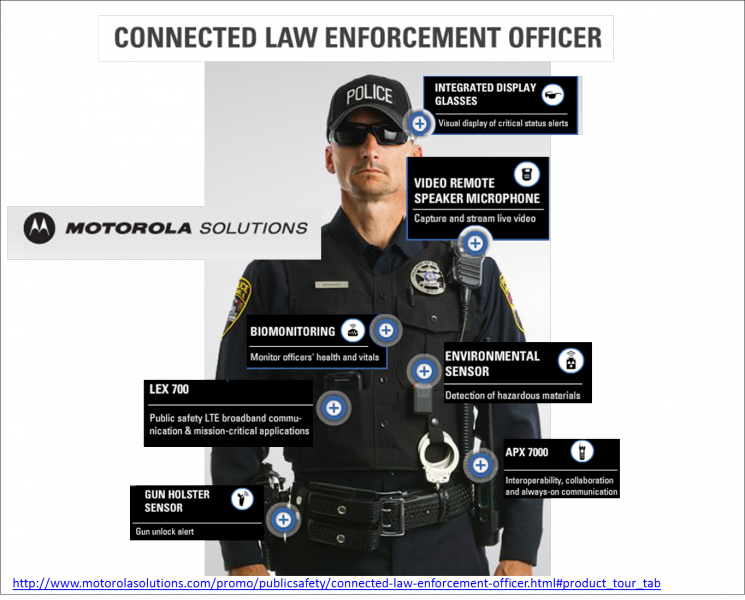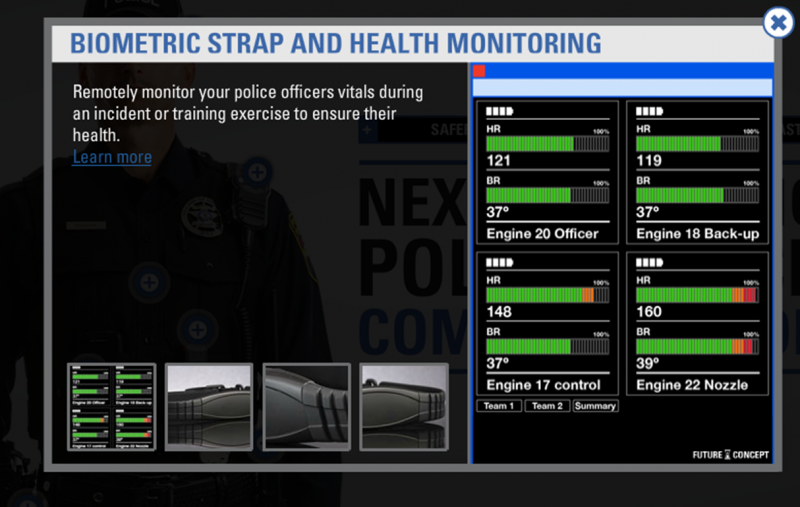Wearable Computing For Enterprises Could Be Bigger Than For Consumers
Wearable computing devices (like Google Glass, Jawbone Up, Nike+ FuelBand, iHealth, and Samsung Galaxy Gear, among others) have made a big splash in the consumer market. My colleague Sarah Rotman Epps’ analysis shows that Google Glass could be the next big App Platform. Fitness wearables might be a bit overhyped, but it’s nevertheless becoming common to see people sporting Nike+ FuelBand devices everywhere you go. No less a tech industry luminary than Mary Meeker recently declared wearables the next wave of computing (see slide 49).
Exciting as the consumer wearable space is becoming, I’d like you to turn your attention for a moment to an example from the enterprise space — specifically, the Connected Law Enforcement Officer Of The Future, as posited by Motorola Solutions.

Motorola Solutions’ vision for police officers is to bring together a variety of different wearable devices to increase the efficiency, effectiveness, safety, and situational awareness of police officers. For example, a heads-up display can feed information from various camera angles, offer status alerts, and present visual information pertinent to pursuit and chase. A gun holster sensor detects when the holster strap is undone, then sends an emergency alert and activates a video feed to determine the cause and to record incident footage. Sensors will detect environmental hazards (like radiation or chemical spills) and even keep tabs on the health of individual officers with biometric health monitoring.

How big could the connected law enforcement market be? There are over 11 million police officers around the world, including 794,300 in the United States alone. Add to that number countless private security firm employees and over 21 million military personnel globally, and you've got a vast market for just this single public safety scenario. And Motorola Solutions can sell up to 7 different wearable devices for every officer or soldier, multiplying the market sizing further.
It's not quite Robocop, but it's a vision of what academic Donna Haraway would call a metaphorical cyborg: a person whose lived social reality is completely intertwined with the use of technology.
This is just one example, but I think it shows how the potential addressable market for wearable computing solutions in enterprise settings might actually eclipse that of the consumer market. For factory floor workers, surgeons, automobile and aircraft mechanics, retail sales people, public safety professionals, transportational and logistics workers, and workers in many, many other professions, enterprise wearables (of various flavors) promise to soon become essential tools in their everday jobs — just as PCs, smartphones, and, increasingly, tablets have become de rigeur productivity tools for information workers.
My major research effort into enterprise wearable computing will continue over the next few months. I'll be studying a variety of wearable devices, usage scenarios, applications, and business models. If you’d like to participate in this research — either as a vendor of wearables or as an enterprise user of wearables — please contact me directly or email briefings@forrester.com and reference “enterprise wearables report.”
J. P. Gownder is a Vice President and Principal Analyst at Forrester Research. You can follow him on Twitter at @jgownder
